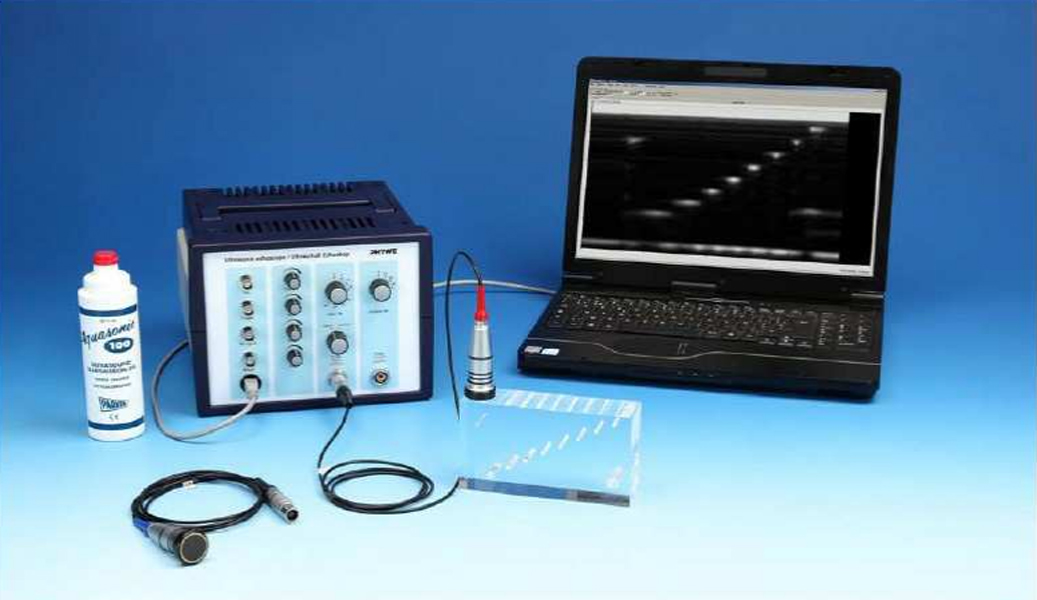Ultrasonic echography (B-Scan)

Principle
The fundamental principles concerning the generation of ultrasonic B-scan images (brightness representation of the reflection amplitudes) are demonstrated with the aid of a simple test ob-ject. The experiment is executed with an ultrasonic echoscope in the pulse-echo-mode and the object is scanned manually. Then, the image quality and the most important image defects will be assessed.
Benefits
- Exciting experiment to teach the basics of ultrasound imaging (echography)
- Diversified experiment with several measurement methods
- With the same setup A-scans can be performed
- Experiment setup can be upgraded for additional experiments in medical imaging and for echoscopy applications in material sciences
- Detailed experiment guide available
Ruler, plastic, 200 mm
Vernier calliper stainless steel 0-160 mm, 1/20
Basic Set Ultrasonic echoscope II
Tasks
- Measure the 3 edge lengths of the test block with a vernier calliper and determine the time of flight of the sound for the various edge lengths of the test block with the aid of the measurement software.
- Calculate the sound velocity of the test block material and switch the measurement software (A-scan mode) to depth measurement.
- Produce two B-scans, one with the 1 MHz probe and one with the 2 MHz probe, with the aid of the measurement software (B-scan mode).
- Measure the depth and width of the echoes in the resulting images.
- Characterise the quality of the images in terms of their resolution and defects.
What you can learn about
- Sound velocity
- Reflection coefficient
- Ultrasonic echography
- A-scan
- B-scan
- Greyscale display
- Resolution
- Zone of focus
- Image artefacts
